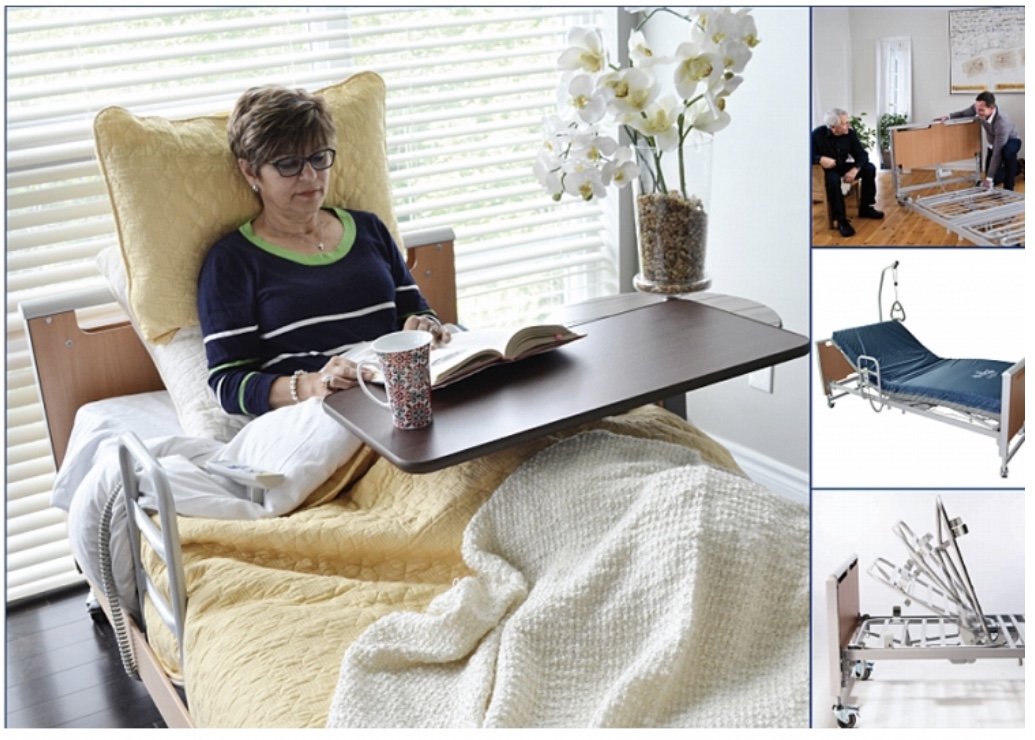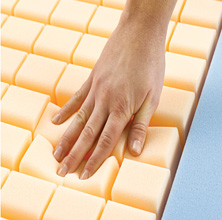Purchasing a home hospital bed can be a significant and sometimes overwhelming decision. Whether it's for a loved one recovering from surgery, someone managing a chronic illness, or an elderly family member needing extra comfort and mobility support, the right bed can make a huge difference in the quality of life and care. This guide will provide everything you need to consider when buying a home hospital bed, ensuring that you make the best decision for your situation.
1. Understanding the Need for a Home Hospital Bed
The first and most important step when deciding to buy a hospital bed for home use is understanding why you need it. Home hospital beds are essential for patients who require long-term care or specialized support to manage conditions like:
- Mobility limitations: Individuals who are bedridden or have difficulty moving independently can benefit from the adjustable features of a hospital bed.
- Post-surgery recovery: Those recovering from surgeries, such as orthopedic procedures, often need beds that help them adjust positions easily.
- Chronic conditions: Conditions like arthritis, back pain, respiratory issues, or cardiovascular problems may require a bed that promotes better circulation, breathing, and overall comfort.
- Elderly care: Many seniors, particularly those with limited mobility or other health conditions, can benefit from the adjustable support offered by a home hospital bed.
2. Types of Home Hospital Beds
There are various types of hospital beds designed to meet different needs, and understanding these options is crucial to making the right choice.
a) Manual Hospital Beds
Manual beds require physical effort to adjust the bed's height, head, and foot positions. These are often the most affordable options, but they require a caregiver's assistance for repositioning. Manual beds are best suited for individuals who do not need frequent adjustments or who have caregivers readily available.
b) Semi-Electric Hospital Beds
Semi-electric beds provide a combination of manual and electric controls. Typically, the height of the bed is adjusted manually, while the head and foot positions are adjusted using electric controls. This type of bed offers a good balance between cost and convenience, making it a popular choice for many home care settings.
c) Fully Electric Hospital Beds
Fully electric beds allow for complete control of the bed's height, head, and foot positions with just the push of a button. These beds offer maximum convenience for the patient and caregiver, as all adjustments can be made easily without physical effort. Fully electric beds are ideal for patients who need frequent position changes or those with limited mobility.
d) Bariatric Hospital Beds
For individuals who are larger or heavier, bariatric beds provide additional support. These beds are designed to accommodate higher weight capacities (up to 1,000 pounds or more), and they are typically wider than standard hospital beds. Bariatric beds often include reinforced frames and extra-heavy-duty motors to ensure durability and safety.
e) Low Hospital Beds
Low beds are designed for individuals who are at risk of falling out of bed. These beds can be lowered to a very low height, reducing the risk of injury if a fall occurs.
f) Adjustable Beds
While not technically hospital beds, adjustable beds are similar in functionality and can be used in place of a traditional hospital bed for patients who require basic adjustability. Adjustable beds offer flexibility with head and foot positions but may not have some of the advanced features found in hospital beds, such as side rails or trapeze bars.
3. Key Features to Consider
When selecting a home hospital bed, several key features should be evaluated based on the patient’s specific needs and the level of care required.
a) Bed Height Adjustability
One of the most important features to consider is the bed’s ability to adjust in height. Height adjustability allows for easier transfers in and out of bed and enables caregivers to provide care more comfortably. Low beds can reduce the risk of falls, while higher beds can make transfers to a wheelchair or walker smoother.
b) Side Rails
Side rails can be an essential safety feature for individuals at risk of falling out of bed and can also make it easier for the end user to move within the bed. Some beds come with removable or adjustable rails that can be customized based on the patient’s needs. However, it's important to balance the use of side rails with patient comfort and independence, as over-reliance on rails can make the patient feel confined.
c) Mattress Types
Selecting the right mattress is as important as the bed itself. There are several types of mattresses designed for hospital beds:
- Foam mattresses: Provide good comfort and support and are suitable for individuals who do not spend extended periods in bed.
- Alternating pressure mattresses: These mattresses are designed to help prevent bedsores by redistributing pressure regularly.
- Air mattresses: Air mattresses can be adjusted for firmness and are also effective for pressure relief.
- Innerspring mattresses: Offer the least amount of comfort and support nor do they provide the same level of pressure relief as other mattress types.
d) Weight Capacity
It’s crucial to choose a bed that can safely support the patient’s weight. Standard hospital beds usually have a weight capacity of around 350 to 450 pounds. Bariatric beds are designed to handle higher weight limits and offer more space and strength for larger individuals.
e) Mobility and Portability
Some hospital beds are equipped with wheels for easy movement around the house. Locking wheels allow the bed to stay in place when necessary, while the portability option can be helpful if the bed needs to be repositioned frequently.
f) Trendelenburg Position
Certain advanced hospital beds come with a Trendelenburg feature, allowing the patient to be placed in a head-lowered or foot-raised position. This is particularly helpful for individuals with specific medical conditions such as respiratory issues or poor circulation.

4. Financial Considerations and Insurance Coverage
Buying a hospital bed for home use can be expensive, and understanding your financial options is essential. Prices for hospital beds range widely based on the type and features. Basic manual beds may cost around $1500, while fully electric, high-end models can cost upwards of $10,000 or more.
a) Private Insurance
Private insurance plans may also cover the cost of a home hospital bed, though policies vary significantly between providers. Contact your insurance company to understand the details of your plan and the process for obtaining coverage for a hospital bed.
b) Rental vs. Purchase
For short-term use, renting a hospital bed may be a more cost-effective option. Many medical equipment suppliers offer rental programs, allowing you to use the bed for a set period without the upfront cost of buying a new one. However, if the bed will be needed for long-term care, purchasing the bed outright may be more economical in the long run.
5. Installation and Maintenance
Once you’ve selected the right bed, you’ll need to consider how it will be delivered, installed, and maintained.
a) Delivery and Setup
Many suppliers offer delivery and setup services, which can be helpful, especially if the bed is heavy or complicated to assemble. Make sure to ask about any additional fees for setup and delivery before finalizing your purchase.
b) Maintenance
Hospital beds, especially those with electrical components, may require occasional maintenance to ensure proper functionality. Check with the manufacturer or supplier regarding warranty options and whether they offer maintenance services.
6. Emotional and Practical Considerations
Beyond the technical and financial aspects, buying a home hospital bed involves emotional considerations. Having a hospital bed in the home can signify a significant change in a patient’s independence and health status. It’s important to involve the patient in the decision-making process as much as possible, ensuring that the bed feels comfortable, practical, and non-intimidating.
Conclusion
Buying a home hospital bed requires careful consideration of the patient’s medical needs, financial situation, and personal preferences. From manual to fully electric options, with features like adjustable height, side rails, and specialized mattresses, there’s a wide range of choices available. Be sure to evaluate your options thoroughly by visiting a local home hospital bed showroom, consult with healthcare professionals, and explore financial support options such as insurance coverage to make an informed decision that enhances comfort and care.




.png)

 Copyright © 2024 |
Copyright © 2024 |